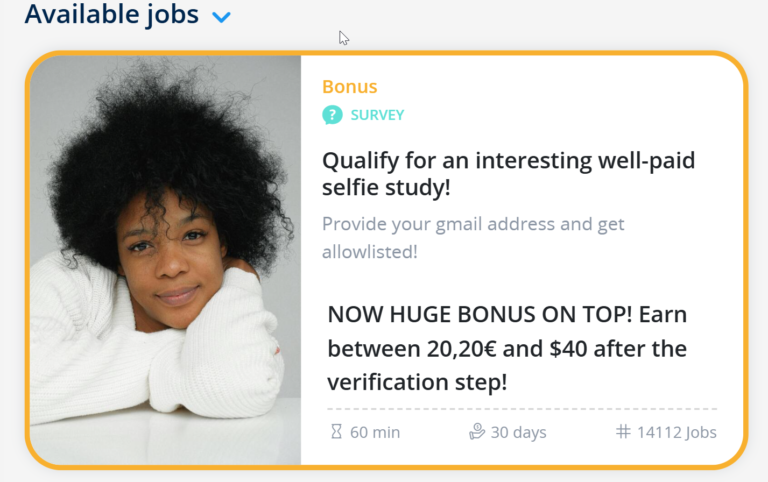The Ultimate Airdrop Playbook: Maximizing Rewards in the Web3 Economy
One of the most accessible entry points into the Web3 ecosystem is the role of an Airdrop Hunter or Network Tester. These positions allow you to actively engage with emerging blockchain projects while earning rewards, usually in the form of cryptocurrency or tokens. For newcomers eager to dive into Web3 without extensive technical skills or prior experience, these roles offer a unique blend of learning and earning.
Who is an Airdrop Hunter or Network Tester?
An Airdrop Hunter participates in promotional campaigns launched by blockchain projects to distribute free tokens to users who complete specific tasks. These campaigns help projects gain exposure, build communities, and attract early adopters.
#1. What is your highest level of education?
#2. Do you have a CV or resume ready?
#3. Have you ever attended a job interview before?
#4. What type of job are you looking for?
#5. Are you ready to start working immediately?
#6. What is your gender?
#7. How much would you like to earn per hour?
A Network Tester, on the other hand, contributes to the development and improvement of blockchain protocols and decentralized applications (dApps) by testing their functionality, providing feedback, and reporting bugs during their beta or testnet phases. This ensures that the platforms are user-friendly and free of critical issues before their public launch.
Why Are These Roles Important in Web3?
Both roles play a vital part in the Web3 ecosystem:
- Community Building: Airdrop campaigns help projects grow their user base and foster active communities.
- Improving Usability: Network testers ensure that dApps and protocols are user-friendly, secure, and functional.
- Decentralized Development: By involving the community in testing, Web3 projects embrace decentralization at their core, giving users a say in shaping the product.
What Does an Airdrop Hunter Do?
As an airdrop hunter, your primary task is to complete activities required to qualify for free tokens. These activities typically include:
- Joining Social Media Channels: Follow the project on platforms like Twitter, Telegram, or Discord to stay updated on its developments.
- Engaging with Content: Like, share, or comment on posts to help spread the word about the project.
- Signing Up for Newsletters: Subscribe to email updates to remain informed about project milestones.
- Testing Applications: Use the dApp or platform during its beta phase and provide feedback.
- Referring Friends: Many airdrop campaigns offer additional rewards for bringing in more participants.
- Fulfilling On-Chain Tasks: Some airdrops require users to perform specific blockchain transactions, such as interacting with a smart contract or staking tokens.
What Does a Network Tester Do?
Network testers contribute to the development and quality assurance of blockchain projects. Their tasks often include:
- Exploring Testnets: Engage with blockchain testnets to simulate real-world scenarios without using actual money.
- Testing dApps: Use decentralized applications and identify issues related to functionality, design, or user experience.
- Running Validator Nodes: Participate in consensus mechanisms by setting up nodes to validate transactions during the test phase.
- Reporting Bugs: Provide detailed reports on any issues encountered, including steps to reproduce them and potential fixes.
- Suggesting Improvements: Offer feedback to improve the user interface, features, or overall performance of the application.
How to Get Started as an Airdrop Hunter or Network Tester
1. Set Up a Crypto Wallet
A crypto wallet is essential for both roles. Use wallets like MetaMask, Trust Wallet, or Phantom Wallet depending on the blockchain you’ll be working with. Ensure that you securely back up your seed phrase and never share it with anyone.
2. Join Web3 Communities
Platforms like Twitter, Discord, and Telegram are hubs for Web3 communities. Follow projects, participate in discussions, and stay updated on upcoming airdrop campaigns and testnets.
3. Track Airdrop Opportunities
Several websites and forums list ongoing and upcoming airdrop campaigns. Popular platforms include:
- Airdrops.io
- CoinMarketCap Airdrops
- Crypto Airdrop Alert
- Earnifi (focuses on unclaimed airdrops)
4. Sign Up for Testnets
Keep an eye on blockchain projects launching their testnets. Developers often announce testnet opportunities on their websites or social media platforms. For example:
- Ethereum testnets (Goerli, Sepolia).
- Polygon testnets.
- Solana devnets.
5. Learn Basic Blockchain Interactions
Understand how to perform basic blockchain actions like sending transactions, interacting with smart contracts, and staking tokens. Tutorials and guides on platforms like YouTube or Medium can help you get started.
6. Document Your Feedback
When testing, maintain detailed notes about any issues you encounter. Include screenshots, descriptions of bugs, and suggestions for improvements. This professionalism increases your chances of earning more opportunities.
Earning Potential in These Roles
- Token Rewards: Successful airdrop hunters often receive tokens that can be held, traded, or staked. These tokens can sometimes appreciate significantly in value after the project’s launch.
- Testnet Incentives: Many projects reward testers with tokens that can later be converted to real value once the blockchain goes live.
- Reputation Building: Consistent participation in testing can lead to paid roles in quality assurance or community management.
Challenges and Tips for Success
Challenges:
- Scams: Not all airdrop campaigns or testnets are legitimate. Always verify projects before participating.
- Time-Intensive: Completing tasks can be time-consuming, especially when juggling multiple campaigns.
- Technical Barriers: Some testnets require a basic understanding of technical setups like running nodes or interacting with blockchains.
Tips for Success:
-
- Research Projects: Focus on airdrops and testnets from reputable projects with active communities and solid roadmaps.
- Secure Your Wallet: Double-check URLs, avoid phishing scams, and never share your private keys.
- Start Small: If a task involves real money, start with small amounts to minimize risks.
- Stay Organized: Use tools like spreadsheets to track your participation in multiple airdrops and testnets.
- Join Communities: Engage with other airdrop hunters and testers to share tips, stay updated, and avoid pitfalls.
Why This Role Is Perfect for Beginners
Becoming an airdrop hunter or network tester is one of the most beginner-friendly ways to immerse yourself in Web3. It doesn’t require advanced technical knowledge, and you can start with minimal investment. As you gain experience, you’ll not only earn rewards but also develop a deeper understanding of blockchain technology and decentralized systems, potentially opening doors to higher-paying roles in the future.
This is more than just a job—it’s an educational journey into the heart of Web3, where you can learn, grow, and contribute to the next evolution of the internet.









